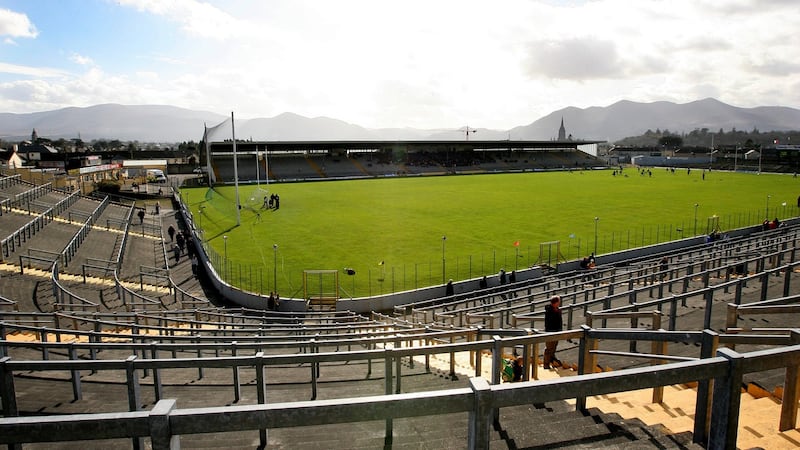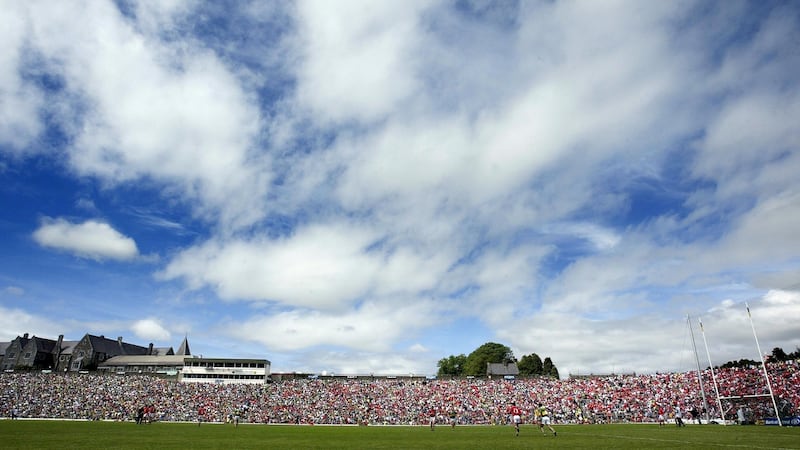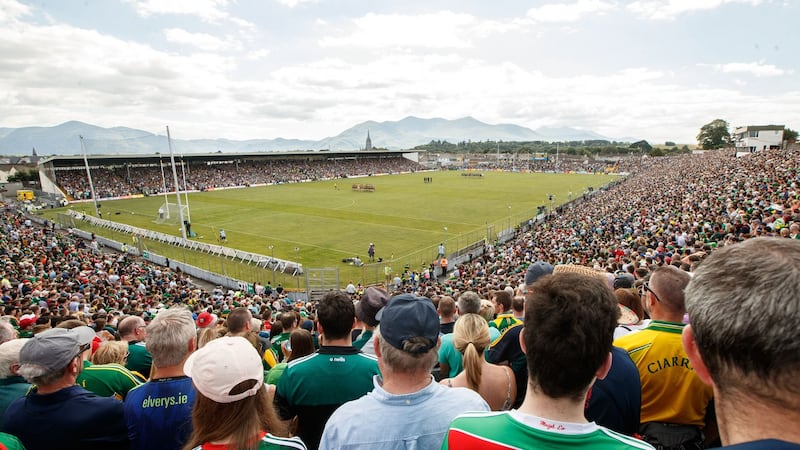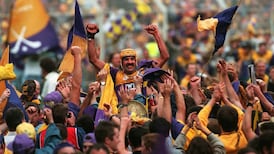It never rains when Kerry are playing in Fitzgerald Stadium. If I have learned one thing above all others in three decades of going to matches in Killarney, it's that whatever juju the hoors down there are able to pull on the weather gods, the sun is always blazing and the lad out the back in the ice-cream van is always doing Bezos-level business.
Now, you might very well recall a match you were at there where it rained and you got drenched but that's nit-picking. Nobody likes a nit-picker. Least of all someone such as myself, who got sunburnt there at the Munster final on my first visit as a 10-year-old in July 1989 and did so again when Kerry played Mayo in the super-eights game last summer. Don't be telling me it rains in Fitzgerald Stadium.
We had cousins in Kerry, which is why we were there in ’89. They had moved down from Monaghan a few years earlier so it was a kind of mystical annual treat to go and visit them. When you’re that age living up by the border, Kerry seems as far off as Pluto. It certainly seemed to have had an interplanetary affect on my cousins, who had shed their Monaghan accents with a haste that might have offended more sensitive people than us.
My uncle was a Garda from south Kerry who had been stationed in Monaghan for a good few years before bringing the family back down to the Kingdom. One of his first big days at work upon his return was the 1987 Munster hurling final replay between Cork and Tipp. His post for the day was the Fitzgerald Stadium tunnel, in between the dressingrooms and the pitch.
The game was a draw, just like the first day, only now there was going to be extra-time so the teams went back to the dressingrooms to get ready for it. When Cork emerged a short time later, the uncle suddenly spotted a chap with a cast on his arm belting the Cork players as they were going out onto the pitch. (It is important to reiterate at this point that the uncle was a Kerryman who had been living in Monaghan. Neither, as the man says, a hurling stronghold.)
Anyway, the uncle sprang into action, grabbing the chap with the cast on his arm and pinning him up against the wire. Upon which, the other Garda on duty with him rushed over and went, "Here, what are you at? That fella is a guard in Tralee. That's Joe Hayes, he was playing for Tipp the last day." Hayes had broken his thumb in the drawn game but was still keen to give what he could to the cause. Order was restored quickly and quietly.

My first visit to what the locals simply call the The Park was two years later. I don't remember an awful lot about the game other than Cork won and John O'Driscoll scored a goal in the first half. Dinny Allen captained Cork and that he finished his acceptance speech with something along the lines of, "Right, let's go and have a few pints!"
Down the town a while later, my dad and my uncle were doing just that in Jimmy O’Brien’s, with me and my cousin in tow. I was sunburnt by this stage, naturally. We were introduced to Ambrose O’Donovan who had started at full back for Kerry and gradually moved up the field as the game wore on, blazing through for a late goal down in front of us. He apologised to me for losing and said we’d get them next year. I started to tell him I wasn’t from Kerry and didn’t much care but felt enough of my dad’s hand on my elbow to know to whisht up and leave him be.
Every time I’ve been back, for work or otherwise, there has been something slightly other-worldly about the place for me. One year when the Irish Open was in Killarney, the cousin’s scout troop were recruited to pick litter around the course. I bunked in alongside him and we dutifully dib-dib-dibbed for about half an hour before going about our day and watching the golf.
In the evening, we went up to Fitzgerald Stadium and hung about at Kerry training. One of them had backed Mark McCumber and was effing away good-oh about the useless effer missing the cut. Kerry weren’t what they used to be but they were still Kerry and I was still 12. The gods cursed. The gods bet on golfers and lost. This was thrilling stuff to be able to access.
The thing to remember about GAA stadiums is that they are each their own thing. Blessedly so, at least for now. We can presume that this will change as time passes and that if you spin the tape on to the 2050s say, there will be a good dozen county grounds that are approximates of each other. Health and safety, corporate hospitality, the general global trend towards rationalisation – all of these will have their way.
But for now, still, there’s no such thing as a cookie cutter GAA stadium. St Tiernach’s Park is different to Semple Stadium, The Marshes is different to The Hyde. Each of them tell a particular story about their own history and surroundings, about the patchwork of dreams and plans and labour that went into stitching them together down the decades.

So it is with Fitzgerald Stadium. If you were given that patch of land up on the hill off Lewis Road in Killarney today and told to build a stadium from scratch, you wouldn't come up with what's there. It's probably the only GAA ground in the country where you come through the front gate and still wonder for a second where the stadium is.
There's a small training field to your right when you walk in, which surely can't be it. And there's a big stone building in front of you, which looks for all the world like the back of an office block. Then you see the hill off up to your right and a few flagpoles and you catch on that that you must be looking at the back of the back of the goals. You only need to take one glance at it to shudder for the generations of Kerry and Dr Crokes teams that have been made sprint up it.
There’s nothing particularly fancy about the place. Three sides of the pitch are skirted by a bowl terrace and the stand runs along the town side. For years, it had the second biggest capacity of any GAA ground in the land, with only Croke Park ahead of it. There are plenty of vantage points to see out onto the pitch, none of them bad.
But the thing about Fitzgerald Stadium that makes it itself isn’t really to do with the pitch or even what happens on it. The football is generally always good and Kerry generally always win. Since my first game there in 1989, they’ve had 36 summer days and nights in the park and only lost twice. They’re unbeaten in championship in Killarney since 1995. Whatever you go to Fitzgerald Stadium for, you don’t go for variety.
No, what sets it apart is, of course, the setting. This in itself could be taken as a stick to beat the place with. There are unquestionably better stadiums in the country, places with a better surface and more toilets and comfier seating and more than one covered stand in case of rain – even though we know it doesn’t rain – and, seriously, more toilets. It’s the worst kind of back-handed praise to big-up a stadium on the basis of everything outside its four walls.

But so what? The view is soul food for the eyes. One of the genuine pleasures available to anyone in Irish sport is to stand up towards the back of the O’Connor Terrace in the half an hour before a game and to look out for miles across the top of the O’Sullivan Stand, onwards over the town and its steeples and out for miles to the mountains beyond. It’s MacGillicuddy’s Reeks, it’s Carrauntoohill, it’s Kerry uber alles.
It’s nearly enough to make you forgive them their grá for themselves. Or at least get a better understanding of why they have such a defined identity. When the face you put to the outside world looks like that, why wouldn’t you carry yourself with a bit of a gatch? And when the team playing down on the pitch, that one timeless expression of Kerryness, when it never loses in Killarney, how else should the people be? They are Kerry. They would not be anyone else.
Regardless, everyone should go see a game there at least once in their life. The players will come and go but the main star on view will always be Killarney.













